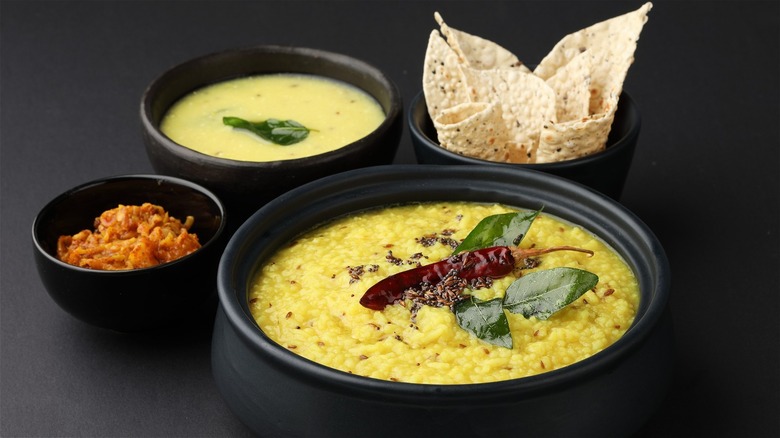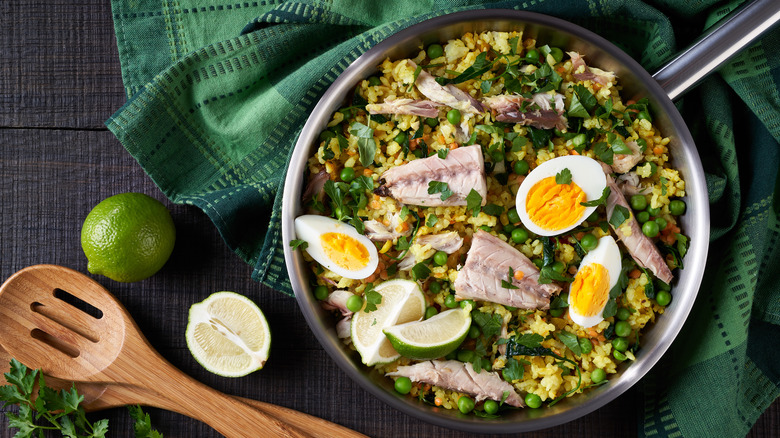Khichuri Is The Indian Comfort Food With Egyptian And British Influences
India is a food-lovers paradise, and the flavors and spice blends of Indian cuisine have wide-ranging appeal. During the country's monsoon season, there's no shortage of traditionally-prepared comfort foods to help warm you up inside. Khichuri, a simple combination of healthy and affordable staple foods — rice and legumes — is one such meal. Eventually, the British in India got their hands on the dish and put their own spin on it, and they brought it with them to Egypt.
Once British colonists had tasted India's khichuri, they simply had to bring this newly discovered comfort food back home with them — after making a few tweaks of their own, of course. They also changed the name of the dish, and today it's a British breakfast specialty known as kedgeree. The English didn't care for lentils, so they swapped them out for boiled eggs and smoked haddock. Even Queen Victoria enjoyed khichuri, having been introduced to it by her Urdu Tutor.
The far-reaching roots of this delicacy don't stop there. Egypt's national dish, koshari, was likely inspired by khichuri, though their version features macaroni noodles in the mix. It's probable that the British were responsible for the dish's introduction to Egypt, as it was made for regiments of the British Indian Army stationed in Cairo during World War II. The cheap and filling meal would have given the soldiers and other Egyptians both comfort and stamina.
A humble food with a fascinating history
Khichuri has been warming bellies as far back as the ninth century B.C. The first mention of the dish is in one of the world's longest epic poems, the Mahabharata. In the 14th century A.D., a Moroccan explorer named Ibn Battuta documented that a buttery variation of khichuri was eaten daily in South Asia. It wasn't until the Mughal Empire of the 1500s that it rose to popularity, as it was one of Emperor Akbar's favorite meals. His attendant is said to have cooked up over 2,600 kilograms of tasty khichuri every day.
khichuri, in all of its wonderful variations, is so popular that it is often referred to as India's national dish. The ingredients vary across regions, including sweet versions, savory versions, dry versions, and stew-like versions. But for the most part, khichuri is made with rice and lentils, with a name derived from the Sanskrit word "khiccha," which means rice and legumes. Not only is it packed with nutty flavors and a zesty kick, but it's also filling, healthy, and easy to make — it should take much less than an hour. Khichuri has stretched to all corners of the globe throughout its long history, and you can try it today at some of the best Indian restaurants in the U.S.

